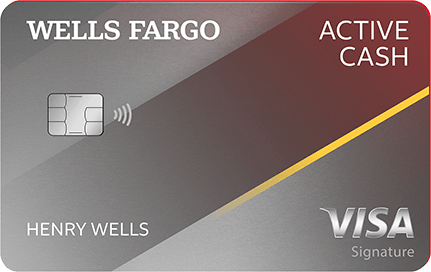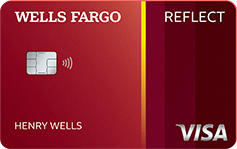Credit card rewards may seem complicated if you’ve never dealt with them, but if you use credit cards regularly, you could be missing out. Credit cards with reward points programs allow you to earn points on certain purchases. Even better, those points can help you stretch your budget.
There are different types of rewards credit cards, so the key is to find one that matches your spending habits — and one you’ll qualify for based on your credit score. For example, some rewards cards let you earn a flat rate on eligible purchases, while others may offer bonus points in certain spending categories.
Learn more about how rewards credit cards and rewards points work, and how to find the right one for you.
What are credit card rewards?

Credit card rewards are a type of loyalty program that lets you earn points, cash back, or other rewards when you make eligible purchases with your rewards credit card. You can redeem what you earn in different ways, depending on the card.
Types of rewards
If you’re interested in earning rewards for your spending, you should first understand the different types of rewards credit cards:
- Cash back rewards: This is when you earn a percentage back (or cash-back rate) on your purchases in the form of a statement credit, a check, or a deposit into your bank account.
- Points rewards: With points rewards, you’ll earn a certain number of points per dollar spent, with certain types of spending earning extra points. For example, you may earn bonus points for purchases made at U.S. supermarkets or gas stations on one credit card, while another may focus on travel purchases or restaurant spending.
- Miles rewards: Credit cards that earn airline bonus miles are tied to airline loyalty programs. They are designed to help you earn free flights and discounts on air travel.
- Hotel rewards: Some co-branded cards help you earn points that are tied to a specific hotel chain’s loyalty program. You may be able to earn free nights, upgraded rooms, and fast track your way to higher tier status for even more benefits.
In general, points cards are best for people who want to focus on certain spending categories. To maximize redemption value, you want your rewards points to align with the things you spend the most on.

How can I earn credit card reward points?

To earn credit card rewards points, you simply make eligible purchases with your card and the points will accumulate. Depending on the credit card, some purchases may earn bonus points, so it’s a good idea to understand the rewards program of any credit card you’re considering and to spend strategically.
Rewards points earning structures
There are three basic ways to earn credit card rewards on eligible purchases:
-
Flat rate: On a flat-rate card, eligible purchases are treated the same and each dollar is worth a set number of points; for example, you may earn 1 or 2 points per dollar spent.
-
Tiered earnings: With a tiered structure, there is a set number of points for different categories, with some earning bonus rewards. This type of credit card may offer 3 points per dollar on travel and streaming services, 2 points per dollar at grocery stores and drugstore purchases, and 1X points (or 1 point per dollar) on other purchases.
Rotating categories: Some credit cards offer a high rewards rate in just one or two categories, but those categories change each quarter. For example, from January through March, you may earn 5 points per dollar spent on entertainment, and 1 point per dollar on other purchases. Then in April, the top category may change to specific ecommerce retailers.

Maximize spending on your highest point-earning categories

You want to choose the best rewards credit cards for your shopping style, but you also want each purchase you make to earn you the most rewards possible. Many cardholders have more than one card so they can maximize their different spending categories.
Here’s an example: Let’s say you frequently travel and dine out, but you also spend a good amount on everyday expenses like groceries and gas. Someone in this situation could benefit from carrying both a travel rewards credit card to help fund getaways, plus another credit card that offers bonus points for food shopping and at the pump.
If you prefer not to juggle multiple cards, you may want to find one that aligns best with your spending style. This could be a flat-rate card or one with rotating bonus categories if you enjoy having opportunities for extra rewards.
Remember that you never want to spend beyond your means in a quest to earn points. If you’re unable to pay your balances in full each month, the interest charges you incur can quickly offset your earnings.
Take advantage of introductory bonus points
One way to get a jump-start on earning points is by taking advantage of signup bonuses. These credit card offers typically set spending requirements you must meet within a set amount of billing cycles from when you open your account. If you fulfill those requirements, you may receive several introductory points.
Tip: In addition to credit card rewards, explore additional benefits like cell-phone protection, concierge services, introductory APR, travel upgrades, airport lounge access, no foreign transaction fees, balance transfers, and extended warranty on purchases. Intro APRs and other perks provide added value for cardmembers.

How do I redeem my credit card reward points?

To redeem points, sign into your credit card account online or in your card’s mobile app. Then look for a link to the card’s menu or catalog of redemption options. Once there, you can make your selections. Some popular ways to redeem points include using them toward flights, hotel stays, or gift cards.
Other common ways to redeem rewards points
- Transfer to a travel partner’s loyalty program
- Make a charitable donation
- Buy merchandise from retailers
- Pay for specific retailer purchases using points
- Get a statement credit for items already purchased
Always read the fine print since terms apply in all rewards programs.
What credit card points are worth
Most commonly, one credit card point is equivalent to one cent. So, if you earn 10,000 points, your points will have a $100 value. However, with some rewards credit cards, there could be different point values depending on how you choose to redeem them.
For example, with some travel rewards cards, you may earn more than one cent per point when you redeem for airfare or book a hotel with travel partners. By contrast, if you choose to purchase merchandise or gift cards with your points, the value may be less than one cent per point.

When should I redeem my credit card points?

Deciding when to redeem credit card points is a personal decision, but let’s take a look at several common scenarios.
When to save up
Saving up your points makes sense if you’re hoping to cover the cost of a flight or hotel stay for a future vacation, for example. Another strategy that some cardholders use is accumulating points all year and then redeeming for gift cards to use for holiday shopping and gift giving. If you’re a points saver, just make sure that your points do not expire, and that you keep the credit card in good standing, so you don’t risk voiding any rewards you have.
When to cash in
Some cardholders prefer to “earn and burn,” which means as soon as they reach a certain threshold, they redeem. Others keep watch for limited-time promotions when they can squeeze some extra value out of their points, such as a travel deal. If you plan to close a credit card, you’ll want to make sure you redeem all your points before you do it.
Making the Most of Your Credit Card Rewards Points
If you’re new to credit card reward points, the choices and options may seem overwhelming. However, with some planning and strategic spending, you can make the most of your credit card purchasing power.








